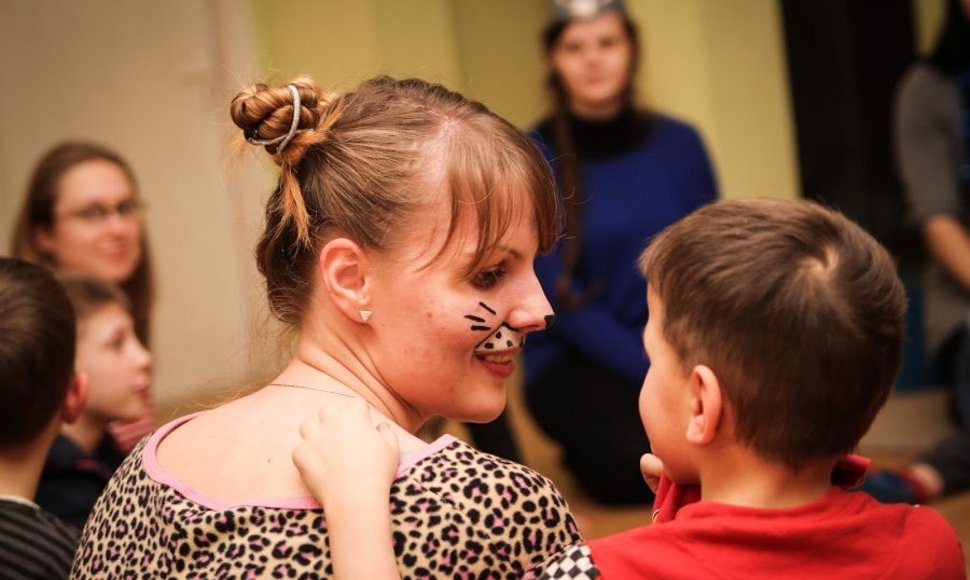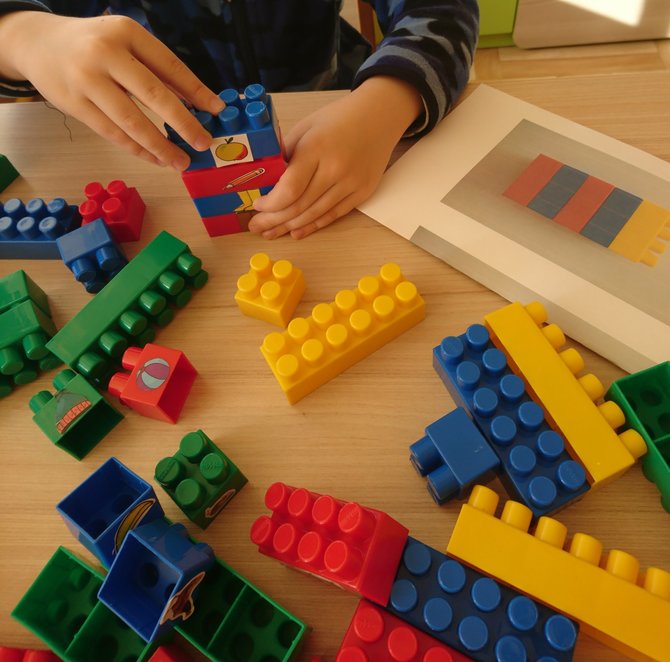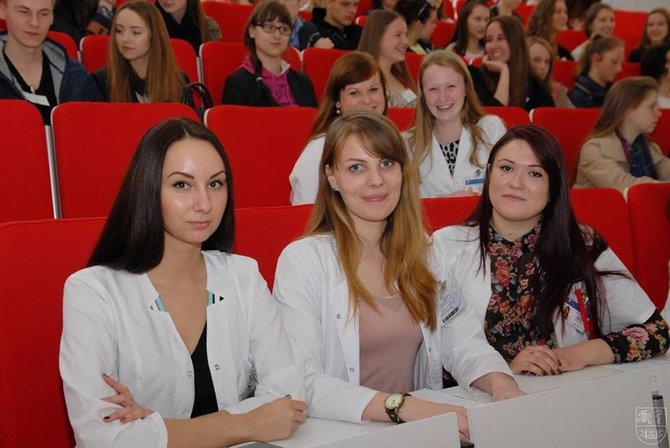Trust established in practice
A great share of her time, the occupational therapist dedicates to her patients. In her office we would find a variety of objects suitable for more than just playing – involving children into entertaining activities, developing and strengthening their movements, certain skills.
“For each of my little friends I prepare different tasks: to push a building block, to build a tower, to string small or large beads, to independently do up a button or pull the zipper of their coat. This is how actions of an adult are implemented through play for children. They learn to hold a spoon, or use the fork and knife with pleasure, with their little fingers they carefully gather and place peas or beans into another place”, - the therapist shares her daily experiences with a smile.
G. Šegždaitė encourages her little patients’ creativity with varied and novel methods, she gradually establishes rapport-based atmosphere within which the occupational therapist and the patient work as a team.
The successes significant for both, are achieved together with the patient. For example, children who have sensory integration needs, receive help in controlling their actions.
“It’s important to choose the appropriate number of stimuli, in other words – to create “a sensory diet”. When children can manage to dress, eat, cut, walk, use their wheelchair – confidence is also created. If in any step children stop, then according to their abilities I encourage them to think on how to solve “the problem, so that they can achieve their aim themselves”, - tells G. Šegždaitė.
Between science and creativity
Occupational therapy is relatively new to the general public in comparison to other forms of rehabilitation like say – physiotherapy. According to G. Šegždaitė, occupational therapy – is a complex of exercises and function improvements, where good understanding of psychology and sociology are particularly important, which aid in empowering the patient to complete a certain task or activity, to be able to meet their own human needs.
“An occupational therapist can help develop the lacking skills or to improve the lost working skills. However, in Lithuania, knowledge about such possibilities – is limited”, - assured the specialist.
G. Šegždaitė admits that in occupational therapy scientific knowledge and creative solutions always go hand in hand. Sometimes, solutions have to be sought for a long time, in how to adapt a task or an exercise for an individual child.
“It’s important to use creativity and imagination in our work – it helps in understanding and knowing patients and in getting better at it. My mission – to look creatively at the complex situation of the child. If in my working environment there isn’t a specific cast to aid the patient in picking up cutlery – then I think of a way, in how to make it possible for them to just reach out and pick up a pen”, - told the young therapist.
Each object is useful at work
Creativity and imagination are in great demand in occupational therapist’s work. Each patient – is different, their disability – is distinctive or of varying degree. Therefore, in the therapist’s office there is a plethora of the most different things: from balls of different sizes, building blocks, magazines – to pots with beans and specifically constructed cutlery.
“Due to their specific physical needs some children cannot use a fork. Therefore, I make the item for each child myself: some have a curved top, others have a thicker base, so that the child can use the item independently, so that they are comfortable. I’m not afraid of giving scissors to children either, I encourage parents to not be afraid of giving them either – of course, with careful supervision. The earlier we encourage children to use a complex object, the sooner they will learn”, - G. Šegždaitė shared her insights about independence and confidence. The professional is particularly happy to hear the words “look I did it myself!” which are always overflowing with sincerity.
“We have to understand: every child can. The sooner we show them, introduce them to the environment, demonstrate to them how to handle one or other object – the sooner they will learn and become independent”, - stressed G. Šegždaitė.
A youthful field full of potential
Even though occupational therapy is a relatively young field in Lithuania, each year creative and dedicated to their profession occupational therapists who implement the latest scientific knowledge in their work are trained. 15 graduates in the field of Occupational therapy graduate the Faculty of Nursing at the Lithuanian University of Health Sciences (LSMU). This is the only faculty in the country, in the field of nursing that collaborates with the World Health Organisation (WHO) and which actively conducts important scientific research.
Research conducted by the Rehabilitation Clinics at the LSMU Faculty of Nursing received great attention for the first project of such kind – rehabilitation of patients recovering from ischemic stroke using virtual reality and computer software. Each year the demand for occupational therapists, who will be able to work in the country’s hospitals, care homes or individually, is increasing.




















